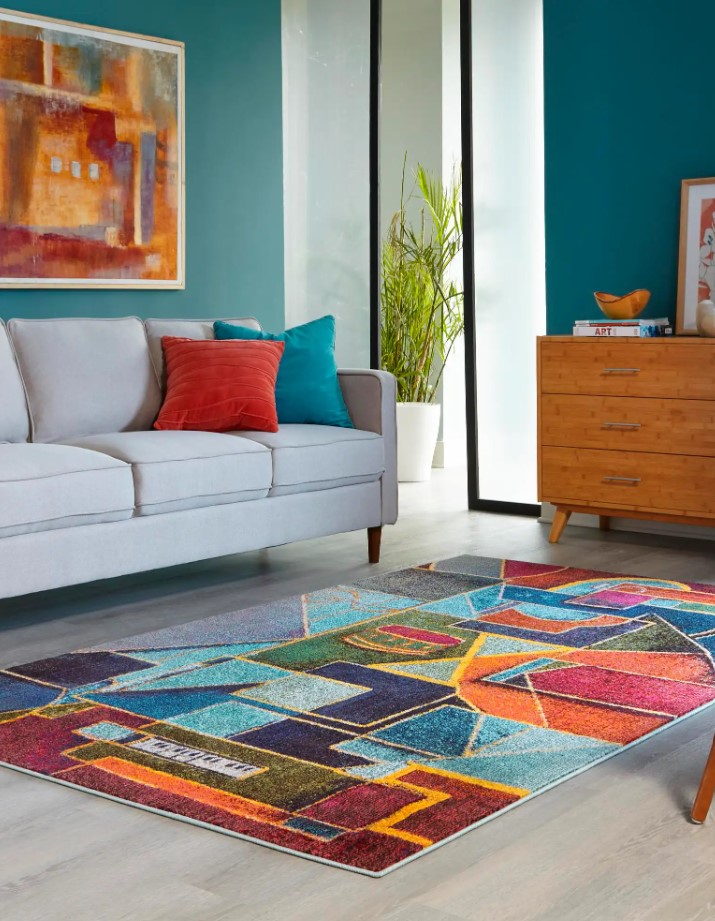Rugs have been an integral part of interior design for centuries, adding warmth, style, and personality to our living spaces. However, amidst their popularity, several myths and misconceptions have emerged, leading to confusion among rug enthusiasts. In this blog post, we’ll take on the role of rug mythbusters, debunking some of the most common misconceptions about rugs and shedding light on the truths behind these enduring beliefs.
Myth #1: Rugs are Only for Decoration, Not Function
It’s a common misconception that rugs serve purely decorative purposes and offer no practical benefits. However, the truth is that rugs provide both aesthetic appeal and functional value. Not only do rugs add warmth and texture to a room, but they also help to absorb sound, provide insulation, and protect flooring from wear and tear. From softening hard surfaces to defining living areas, rugs play a crucial role in enhancing both the beauty and functionality of a space.
Myth #2: All Rugs are High Maintenance
Another prevalent myth is that all rugs require extensive maintenance and care. While it’s true that certain rug materials and styles may require more attention than others, many rugs are designed to be low-maintenance and easy to clean. For example, synthetic rugs are often stain-resistant and can be cleaned with mild detergent and water. Additionally, regular vacuuming and rotating rugs can help prevent dirt buildup and prolong their lifespan. By choosing the right rug material and following simple maintenance tips, you can enjoy the beauty of rugs without the hassle of high maintenance.
Myth #3: Rugs Make Rooms Look Smaller
Contrary to popular belief, rugs can actually make rooms appear larger when chosen and placed correctly. By selecting a rug that complements the size and shape of the room and leaving a border of flooring exposed around the edges, you can create the illusion of more space. Additionally, rugs with light colors and subtle patterns can visually expand a room, while strategically placing mirrors can further enhance the sense of openness. With the right design choices, rugs can be powerful tools for visually enlarging and enhancing living spaces.
Myth #4: Rugs Should Match Everything in the Room
While matching rugs to other elements in a room may seem like a safe choice, it can actually limit your design options and create a predictable and uninspired look. In reality, rugs don’t need to match everything in a room; instead, they should complement the existing decor and add visual interest. Mixing patterns, textures, and colors can create a dynamic and layered aesthetic, while contrasting rug styles can add depth and dimension to a space. Don’t be afraid to experiment with different rug styles and combinations to create a look that is uniquely yours.
Myth #5: Rugs are Allergic Traps
Some people believe that rugs exacerbate allergies by trapping dust, pet dander, and other allergens. While it’s true that rugs can harbor allergens if not properly maintained, regular cleaning and vacuuming can significantly reduce the risk of allergen buildup. Additionally, choosing hypoallergenic rug materials such as natural fibers or synthetic materials can help minimize allergic reactions. By keeping rugs clean and selecting allergy-friendly options, you can enjoy the beauty and comfort of rugs without worrying about triggering allergies.
Rugs are versatile and functional design elements that add warmth, style, and personality to our homes. By debunking common myths and misconceptions about rugs, we hope to empower you to make informed decisions when choosing and caring for your rugs. From debunking the myth that rugs are purely decorative to dispelling the notion that rugs make rooms look smaller, understanding the truths behind these misconceptions can help you fully appreciate the beauty and benefits of rugs in your home.

